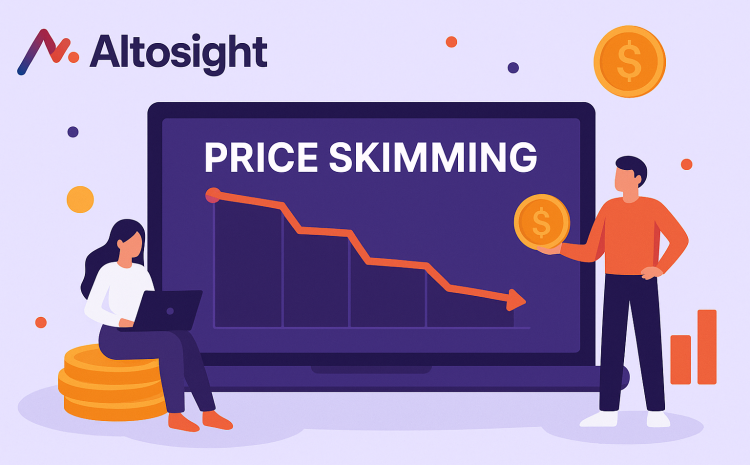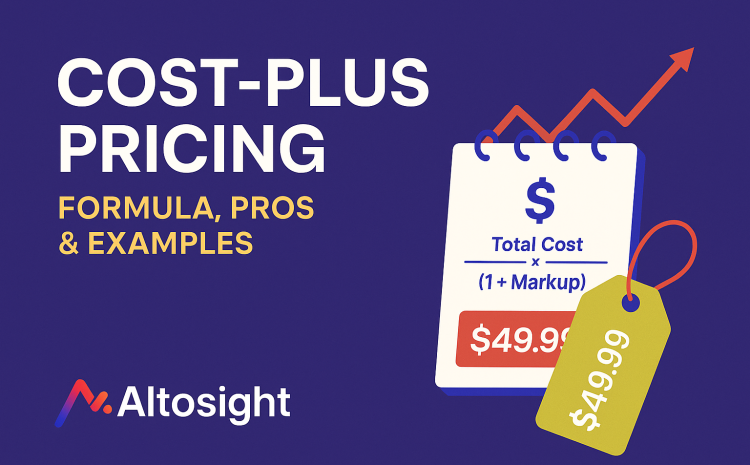
Proper pricing is crucial if you’re selling a new product / service or an existing one to a new market.
You want to be able to penetrate the market and attract customers as quickly as possible. But in the long term, you also want to see a return on your investment. That’s where penetration pricing comes in.
The concept is simple yet powerful: set your prices low, even if it means sacrificing short-term profits, to seize a significant share of the market. The ultimate goal is to bolster brand recognition and customer loyalty, eventually allowing for price adjustments and increased profitability in the long run.
Numerous successful brands, including Kroger and Costco, have harnessed the potential of penetration pricing to their advantage. Take, for instance, Kroger’s approach of offering organic foods at lower prices compared to its competitors. Despite this aggressive pricing, Kroger ensures it operates profitably by leveraging economies of scale.
On the other hand, Costco has mastered the art of driving costs down through a combination of strategies, such as maintaining a narrower selection, limited operating hours, and enticing customers with membership fees that unlock significant savings.
Both Kroger and Costco exemplify how the astute implementation of penetration pricing can not only secure a strong foothold in the market but also enable sustainable growth and profitability in the future.
In this post, we discuss penetration pricing and its pros and cons. Then you can decide when it is the right pricing method for your business.
What is Penetration Pricing: Penetration Pricing Definition
Penetration pricing is a strategy where a company initially sets low prices for its products or services to gain market share quickly.
This approach attracts customers by offering prices significantly lower than their competitors. The underlying objective is to create strong customer loyalty and establish a solid foothold in the market.
By setting prices low, businesses hope to encourage potential buyers to switch from rival brands enticed by the prospect of a bargain.
A good example is when smartphone providers like Android use a penetration pricing strategy to lure in new customers and build brand loyalty. They do this by offering Android phones at significant discounts. In turn, they can attract new customers and increase market share. This strategy also encourages customer loyalty, as customers may be inclined to stick with the same brand if they get a good deal.
The Art of Penetration Pricing Strategy
Crafting a successful penetration pricing approach requires careful consideration and planning. Here are the key steps to help you develop a practical approach:
- Understand your target market: Before implementing a penetration strategy, it is essential to have a thorough understanding of your target market and your competition (more about competition in step 4). Identify your potential customers’ needs, preferences, and price sensitivity. This information will help you determine the optimal price point to attract them.
- Set realistic goals: Clearly define your objectives for implementing penetration pricing. Are you aiming to quickly capture significant market share, establish brand loyalty, or drive out competition? Setting specific and realistic goals will guide your pricing decisions and help evaluate your strategy’s success.
- Analyze your costs: Calculate your production and operational costs to ensure your penetration pricing technique is financially viable. While setting low prices, profitability is crucial. Consider manufacturing costs, overhead expenses, and any discounts or incentives you plan to offer.
- Evaluate competitor pricing: Conduct a thorough analysis of your competitors’ pricing techniques. Identify their price points, value propositions, promotions and market positioning. This information will help you determine how much lower your prices need to be to attract customers and gain a competitive advantage.
- Determine the duration: Decide how long you plan to implement penetration pricing. This can vary depending on your objectives and market dynamics. Some businesses use this strategy as a short-term tactic to gain market share, while others employ it over a longer period of time.
- Consider product bundling: Combining your products or services is another method of price penetration. This can create added customer value and make your offering more attractive than individual purchases. Ensure the bundled pricing is still significantly lower than the competition and aligns with your cost structure.
- Monitor and adjust: Vigilant monitoring is essential when employing market penetration pricing. Regularly analyze crucial metrics like sales data, customer feedback, and market trends to gauge the strategy’s effectiveness. This ongoing evaluation will provide valuable insights into the impact of your pricing approach and its reception among consumers. Additionally, consider the potential benefits of modifying your product bundle to better align with customer preferences and demands.
Factors Influencing Penetration Pricing
It is also essential to know that several factors influence the success of a penetration pricing approach. They include:
- Product differentiation: The effectiveness of penetration pricing depends on the level of product differentiation. If the product has unique features or offers similar or superior value compared to competitors, it is more likely to succeed with this strategy.
- Price elasticity: Penetration pricing works best for products or services with price-elastic demand, meaning customers are sensitive to price changes. Lower prices attract more customers and stimulate demand, increasing market share.
- Market conditions: Market conditions, including competition, market size, and customer behavior, influence penetration pricing viability. Assess the competitive landscape and evaluate if the market is suitable for a penetration pricing method.
- Economies of scale: Consider the potential for economies of scale as sales volume increases. Higher demand resulting from penetration pricing can lead to lower production costs and improved profitability in the long run.
Advantages of Penetration Pricing
There are several advantages and disadvantages of penetration pricing. So you must consider them and how they affect your business before implementing penetration pricing. Here are some of the benefits:
- Market share gain: When businesses adopt this strategy, they can quickly capture the attention of consumers who may have been hesitant to try their product or service previously due to cost or other concerns. The low price point encourages trial purchases and allows customers to experience the value proposition firsthand, leading to increased trust and repeat business.
- Competitive advantage: Penetration pricing typically catches competitors off guard, leaving them little time to respond. It can ward off new competitors, and existing ones might not even want to follow suit in setting lower prices. This opportunity allows the business to convert as many customers as possible.
- Economies of scale: Setting low initial prices will help you attract a large customer base and quickly gain market share. As demand increases due to these affordable prices, you can achieve higher production volumes, resulting in lower average costs. This, in turn, allows businesses to negotiate favorable deals with suppliers and further reduce procurement costs.
- High inventory turnover: Retailers and distributors benefit from penetration pricing because it increases inventory turnover.
- Increased goodwill: Customers who find value in the initial low price are likely to develop positive perceptions of the brand, leading to increased customer loyalty and positive word-of-mouth.
Disadvantages of Penetration Pricing
Like all pricing methods, there are some drawbacks to penetration pricing. They include:
- Customer price expectation: Offering a product at a lower price may lead to customers developing unrealistic expectations that the price will remain the same or even decrease further. This can be problematic for businesses as they may find it challenging to raise prices once customers become accustomed to paying less.
- Low customer loyalty: Penetration pricing may attract price-sensitive customers who are more likely to switch to competitors that might offer even lower prices, resulting in low customer loyalty.
- Potential damage to brand image: Consumers may perceive lower quality when a company enters the market at a low initial price. They perceive lower-priced products as inferior or lacking certain features. This belief can harm the brand image and make it difficult for companies to position themselves as high-quality goods or service providers. Over time, this negative association can reduce customer trust and prevent businesses from attracting repeat purchases.
- Price war: A price penetration tactic may lead to a price war. As a result, overall profitability in the market decreases, and most price wars aren’t won by the new entrant who started them.
Real-world Examples of Penetration Pricing
Many companies have adopted this strategy. Some have executed it successfully, and others have failed. Below we share a few examples of both.
Netflix
Perhaps Netflix is the best example of a company successfully executing this idea. When the company first entered the streaming market, it offered a low monthly subscription fee, giving customers access to a massive library of movies and TV shows.
This aggressive pricing approach enabled Netflix to quickly gain a large customer base and establish itself as a dominant player in the industry. By offering a compelling value proposition at an affordable price, Netflix was able to penetrate the market and capture a significant share of the streaming market.
Gillette
As far as penetration pricing techniques go, Gillette is one to consider. For years, it has maintained its position as a market leader by offering free razors or pricing them lower than its competitors. In exchange for the loss of profits from low-priced razors, Gillette makes up for it by selling complementary products, like razor blades, attachments, and accessories, at a premium.
Mokal
Mokai, a top Danish cider brand, had targeted Tanzania’s East African market. The company has been analyzing its competitors and existing ciders on the market as part of its market research and strategy. In Tanzania’s relatively mature alcohol market, Savanah is a very popular cider.
While Mokai targets the female sector, Savanah targets both genders. So Mokai had to devise a strategy to capture Savanah’s market despite differences in taste and design.
As a result, the company entered the market with market penetration pricing, offering its cider at a reduced price. Increasing market share and sales volume was the main objective. In the long run, they hoped the strategy might reduce production costs.
However, low prices kept the profit margin down despite increasing sales volumes. Ultimately, the product could not integrate correctly with the Tanzanian market.
Because of a small investment in brand awareness and a lack of credible distributors, the Danish cider failed to penetrate the Tanzanian market due to the wrong implementation of penetration pricing.
Is Penetration Pricing Right for Your Business?
Penetration pricing is a powerful strategy that can help new businesses get their foot in the door by attracting customers with competitive pricing.
However, it is necessary to consider the benefits and drawbacks of penetration pricing before implementing it. On the positive side, this strategy can help businesses attract price-sensitive customers willing to try new products. It can also lead to increased sales volume and market presence.
On the other hand, penetration pricing may result in lower profit margins, especially in the short term. This is because low prices may not cover production costs adequately. Also, businesses need to be cautious of the potential negative impact on their brand image if they decide to increase prices.
To develop an effective penetration pricing plan, you must monitor your competitors’ prices to determine how much lower your prices need to be.





